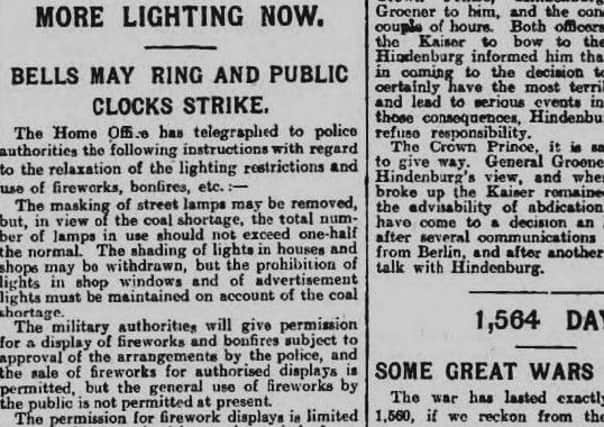Armistice 100: Bells ring and clocks chime as First World War ends but Kaiser is 'haggard and broken' say reports from the day


In this, our final report of day-to-day events in the lead up to the end of the First World War, we skip forward a dew days, to November 11, 1918, the day the war ended.
Back in those days, adverts dominated the front pages of newspapers and it seems, even the end of the war to end all wars did not sway the editors of the day to deviate from that habit. Glance at copies of the Yorkshire Evening Post from November 11 and 12 and you will find adverts for war bonds, local tailors selling their wares and more than a few ‘miracle’ cures for ailments ranging from arthritis to flu.
Advertisement
Hide AdAdvertisement
Hide AdIndeed, you have to make it all the way to pages five and six to read about the end of what was at the time, the biggest conflict in human history.
There were articles about the fate of the coalition government and how Leeds helped in the victory with their massive output of munitions and sending 92,000 men into battle.
There was a report of the war’s closing incidents and one in particular which described the beaten Kaiser as looking “haggard and broken” as he arrived in Holland via car, having earlier had to disembark the train he was travelling on because people kept shooting at it. The article noted: “The Kaiser... looked haggard and broken down and though he maintained a stern countenance to all beholders, his nerves seemed to be not far from breaking point.”
But closer to home, there was hope and optimism, summed up in one headline, which read: “Bells may ring and public clocks strike”. The relaxation of lighting and some other controls was immediate following the end of the war. Even firework displays were allowed.